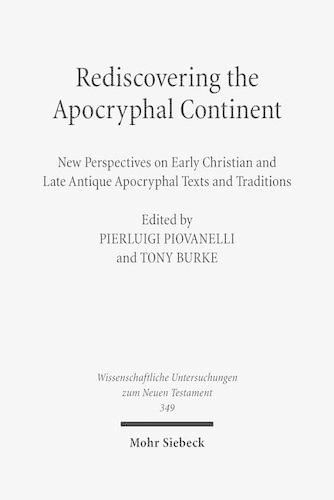Readings Newsletter
Become a Readings Member to make your shopping experience even easier.
Sign in or sign up for free!
You’re not far away from qualifying for FREE standard shipping within Australia
You’ve qualified for FREE standard shipping within Australia
The cart is loading…






This volume collects the contributions of a group of North American scholars who started rethinking, in 2004, the traditional category of New Testament Apocrypha, largely dominated by theological concerns, according to the new perspectives of a greater continuity not only between Second Temple Jewish and early Christian scriptural productions, but also between early Christian and late antique apocryphal literatures. This is the result of the confluence of two, so far, alternative approaches: on the one hand, the deconstruction of the customary categories, inherited from ancient heresiology, of Jewish Christianity and Gnosticism, and on the other hand, the new awareness that the production of new apocryphal texts did not cease at the end of the third century but continued well into late antiquity and beyond. These papers bring together for the first time the typically North American need to reconsider The Ways That Never Parted and other artificially drawn Border Lines with the more European attention paid to the phenomenon of apocryphicity in the long term. In the twenty essays published here, different facets of this apocryphal continent are newly explored, from the Christian appropriation of Jewish stories and literary genres, with a special emphasis on the case of the late antique Pseudo-Clementines and their hypothetical Jewish Christian source, to the complex and controversial situation of the narrative roles attributed to such figures as Judas Iscariot, Mary of Magdala, Mary the mother of Jesus, or Peter. These new insights are particularly relevant not only for the history of the first Jesus movement but also, and especially, for gaining a better understanding of the ways Judaism and Christianity evolved initially together, then side by side, according to a process of differentiation that took more time than previously thought.
$9.00 standard shipping within Australia
FREE standard shipping within Australia for orders over $100.00
Express & International shipping calculated at checkout
This volume collects the contributions of a group of North American scholars who started rethinking, in 2004, the traditional category of New Testament Apocrypha, largely dominated by theological concerns, according to the new perspectives of a greater continuity not only between Second Temple Jewish and early Christian scriptural productions, but also between early Christian and late antique apocryphal literatures. This is the result of the confluence of two, so far, alternative approaches: on the one hand, the deconstruction of the customary categories, inherited from ancient heresiology, of Jewish Christianity and Gnosticism, and on the other hand, the new awareness that the production of new apocryphal texts did not cease at the end of the third century but continued well into late antiquity and beyond. These papers bring together for the first time the typically North American need to reconsider The Ways That Never Parted and other artificially drawn Border Lines with the more European attention paid to the phenomenon of apocryphicity in the long term. In the twenty essays published here, different facets of this apocryphal continent are newly explored, from the Christian appropriation of Jewish stories and literary genres, with a special emphasis on the case of the late antique Pseudo-Clementines and their hypothetical Jewish Christian source, to the complex and controversial situation of the narrative roles attributed to such figures as Judas Iscariot, Mary of Magdala, Mary the mother of Jesus, or Peter. These new insights are particularly relevant not only for the history of the first Jesus movement but also, and especially, for gaining a better understanding of the ways Judaism and Christianity evolved initially together, then side by side, according to a process of differentiation that took more time than previously thought.